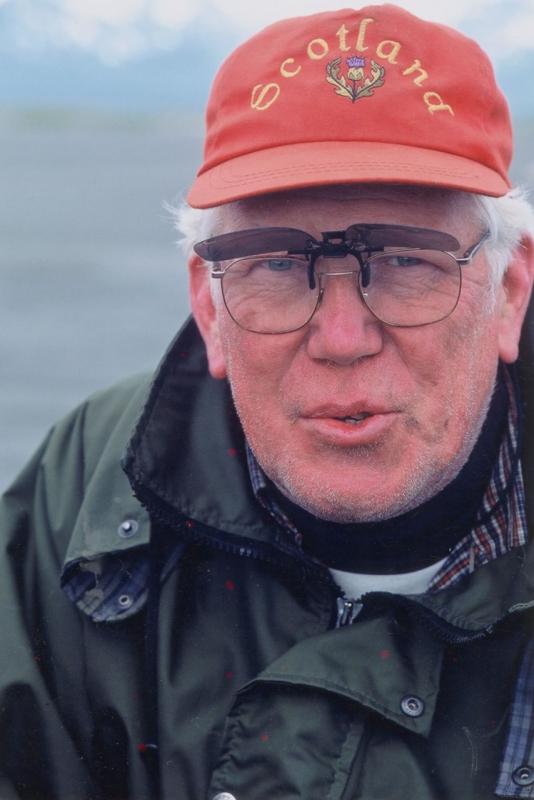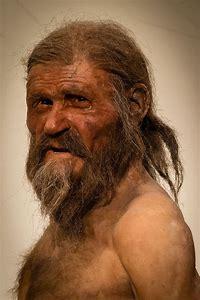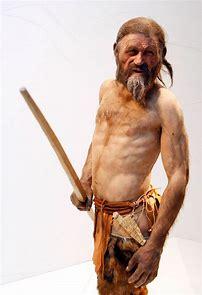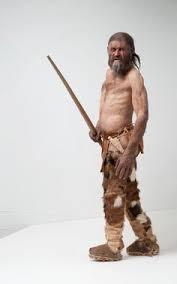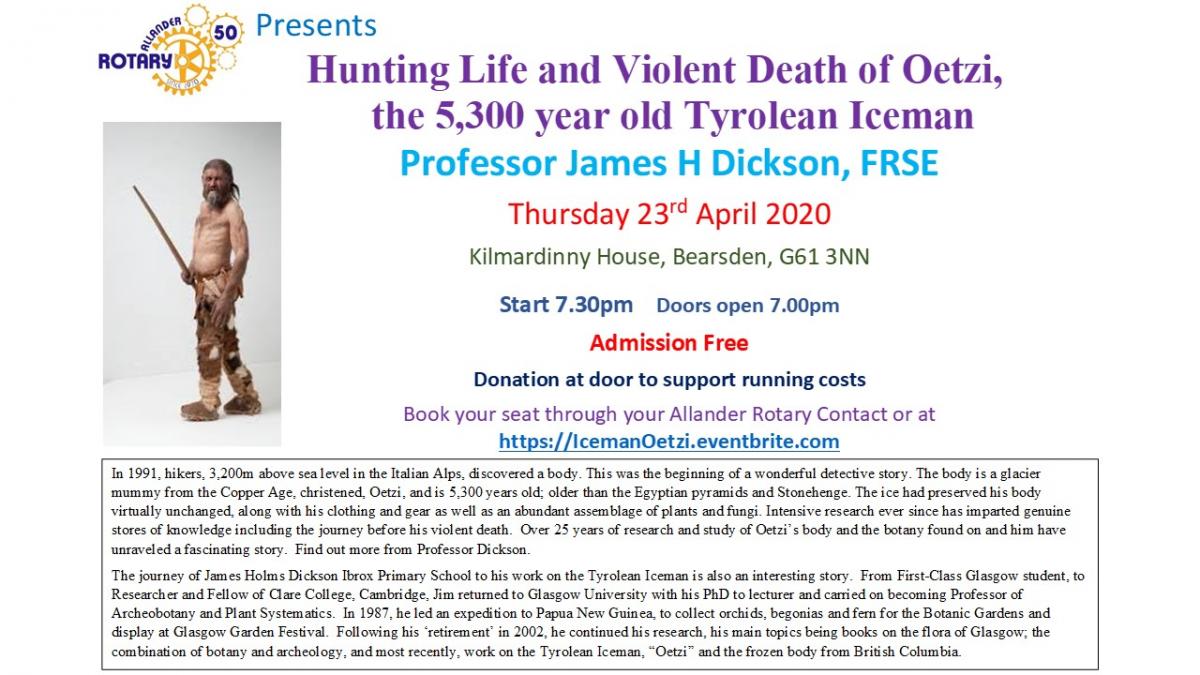Lecture 2020
Thu, Apr 23rd 2020 at 7:30 pm - 9:00 pm
After the inaugural lecture in 2019, we are pleased to announce our 2020 lecture. It will be on Oetzi, the Iceman and given by world renown expert Professsor James H Dickson. Date for your diary is Thursday, 23rd April in Kilmardinny House Bearsden.
Lecture postponed due to Covid-19. It will be re-arranged once the situation clears/reduces.
Thursday 23rd April at 7.30pm Admission Free
Kilmardinny House, Bearsden
Doors open 7.00pm
Book your tickets at https://IcemanOetzi.eventbrite.com
If you are willing, a donation at the door to cover running costs would be appreciated.
Oetzi the Iceman
Oetzi, also known as Ötzi, is a glacier mummy from the Copper Age, a period of the late Neolithic. Oetzi’s sudden death in the ice, 3200m above sea level in the Italian Alps, has preserved him virtually unchanged for thousands of years, giving us a snapshot of the routine life of a Copper Age man. Thanks to these extraordinary circumstances, he has been preserved down to the present day. He lived between 3400 and 3100 BCE. He is therefore older than the Egyptian pyramids und Stonehenge.
Little by little, he has imparted genuine stores of knowledge. He was discovered accidentally by hikers in 1991, on the Schnalstal/Val Senales Valley glacier and has been the subject of intensive research ever since. He was found together with his clothing and gear as well as an abundant assemblage of plants and fungi.
He was still using stone tools but owned an innovatiive and very valuable copper axe. The skill of extracting and processing had recently arrived in Europe from Asia Minor. The advent of copper marked the beginning of the Bronze Age.
Oetzi is Europe's oldest known natural human mummy and has offered an unprecedented view of Chalcolithic Europeans. His body and belongings are displayed in the South Tyrol Museum of Archaeology in Bolzano, South Tyrol, Italy.
Why was he so high in the mountains? What could his stomach and clothes tell of his life? Moss species found on and around his body told their own story. Why were some usually found at low levels only in such high quantities around where his body was found? What about the abundance of tattoos on his body?
Professor James H Dickson, BSc., MA, PhD, FLS., FRSE
James Holms Dickson was born in Glasgow on the 29th April 1937, son of Peter Dickson and Jean Holms. He attended Ibrox Primary School and went on to Bellahouston Senior Secondary. His education continued with his enrollment into the Botany class at the University of Glasgow in 1955, and in 1959 he was awarded a First Class Honours BSc in Botany. After receiving his degree he took up a position as a research assistant and later as senior research assistant at Cambridge University, and stayed in this position until he received his PhD in Botany in 1970. From 1963-1970 he was also engaged as a research and official fellow of Clare College, Cambridge.
After obtaining his PhD, Dickson moved back to Glasgow and began work as lecturer in Botany at the University of Glasgow in 1970. He progressed to senior lecturer, then reader, and finally to Professor of Archaeobotany and Plant Systematics in 1997. He retired from the position in 2002.
In 1987, Professor Dickson was announced leader of the Trades House expedition to Papua New Guinea, whose purpose it was to collect orchids, begonias and ferns to be grown at the Botanic Gardens and then shown in the tropicarium at the Glasgow Garden Festival, with which he was also heavily involved.
Professor Dickson was made a fellow of Royal Society of Edinburgh in 1993 and was awarded the Neill Medal of RSE 1998. In 2006-2008 he was made a Leverhulme Emeritus Fellow.
In later years Professor Dickson was a consultant to Britoil for the Time Trek Pavilion project, which was concerned with presenting the geological history of plants at the Glasgow Garden Festival of 1988. He continues to maintain research in Glasgow, his main topics being books on the flora of Glasgow; the combination of botany and archaeology, and in most recent years work on the 5,300 year old Tyrolean Iceman "Oetzi" and the frozen body from British Columbia.
Related pages...
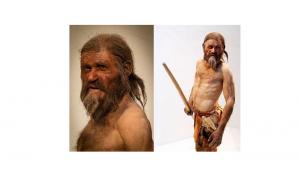
Oetzi the Iceman now on YouTube
more Did you miss our talk on the Ice Man? Don't despair its now available on our YouTube channel.
back to page above this...
Public Lecture
back In 2019 Allander Rotary decided that they would like to offer the residents of Milngavie, Bearsden, the surrounding area and wider public a new service. Free to attend, a lecture on a topic of general interest and where no audience expertise was necessary

